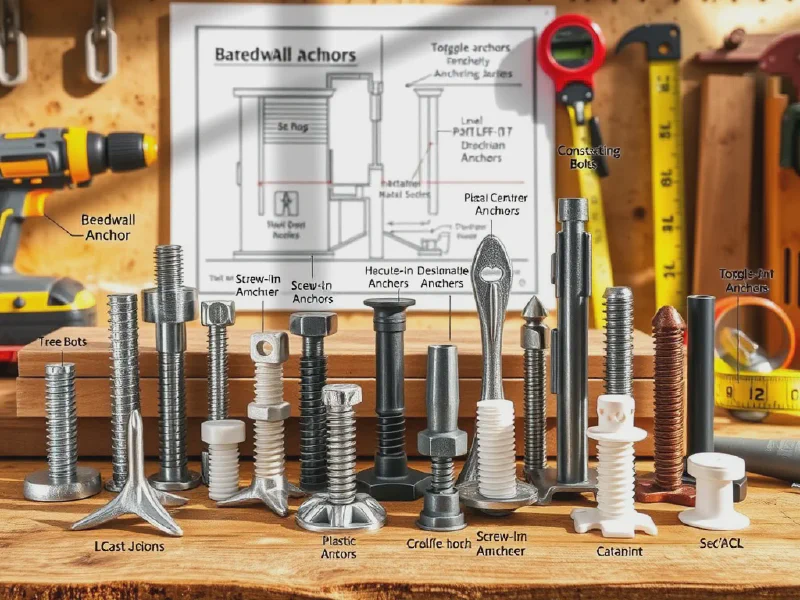The Ultimate Guide to Choosing the Best Drywall Anchors

A Comprehensive Guide to Drywall Anchors
Drywall anchors are essential hardware components used to secure objects to drywall surfaces. Whether you're hanging a picture frame, installing shelves, or mounting a TV, drywall anchors provide the necessary support and prevent damage to the walls. In this comprehensive guide, we will explore the types of drywall anchors, factors to consider when choosing the right anchor, a step-by-step guide to using drywall anchors, top-rated products, and tips for successful installation.
Drywall anchors come in a variety of types, each designed to accommodate different weights and installation methods. Understanding the various types available can help you select the most suitable anchor for your specific needs.
Ensure your shelves are secured with the finest options by reading about the Best Drywall Anchors.
Plastic anchors are the most common type of drywall anchors. They are lightweight and easy to install. Plastic anchors work well for lighter items such as picture frames and small shelves.
Toggle bolts are heavy-duty anchors, capable of supporting significant weight. They consist of a spring-loaded mechanism that expands behind the drywall, providing strong anchorage. Toggle bolts are ideal for mounting heavy objects like mirrors and TV wall mounts.
Molly bolts, also known as expansion anchors, are designed for medium-weight applications. They feature a hollow screw-like body that expands after insertion, providing a secure hold on the drywall. Molly bolts are commonly used for towel racks and curtain rod brackets.
Types of Drywall Anchors
Plastic anchors: Lightweight and easy to install, suitable for lighter items.
Toggle bolts: Heavy-duty anchors for mounting heavy objects.
Molly bolts: Medium-weight anchors with a hollow screw-like body.
Winged anchors: These anchors have plastic wings that prevent rotation during installation.
Self-drilling anchors: Convenient anchors that eliminate the need for pre-drilling holes.
Factors to Consider
Weight capacity: Consider the weight of the object you want to hang and choose an anchor that can support it.
Installation method: Different anchors require different installation methods, so choose one that suits your project.
Material compatibility: Ensure that the anchor is compatible with both the drywall and the material of the object you intend to hang.
Removability: If you plan to remove the object in the future, consider using removable anchors that leave minimal damage to the drywall.
Cost: Drywall anchors come in different price ranges, so consider your budget when selecting the right anchor.
Step-by-step Guide to Using Drywall Anchors
Marking the spot: Decide where you want to install the anchor and mark the spot with a pencil or tape measure.
Drilling the pilot hole: Use an appropriate drill bit to create a pilot hole at the marked spot. Make sure the size of the hole matches the anchor.
Inserting the anchor: Gently tap or screw the anchor into the pilot hole until it is flush with the wall surface.
Securing the anchor: Depending on the type of anchor, follow the instructions to secure it in place. This may involve tightening screws, expanding wings, or engaging toggle mechanisms.
Testing the anchor: Once the anchor is installed, give it a gentle tug to ensure it is secure and can hold the weight of the object.
Top-rated Drywall Anchors
Product 1: Brand X Drywall Anchors. These anchors have a high weight capacity and are known for their durability.
Product 2: Brand Y Drywall Anchors. These anchors come in a variety of sizes and are suitable for a range of applications.
Product 3: Brand Z Drywall Anchors. These anchors have a unique design that provides extra stability and prevents rotation.
Product 4: Brand W Drywall Anchors. These anchors are highly recommended for their easy installation and sturdy hold.
Product 5: Brand V Drywall Anchors. These anchors are budget-friendly and provide reliable support for light to medium-weight objects.
Tips for Successful Drywall Anchor Installation
Choosing the right anchor for the job: Consider the weight and size of the object to be installed and select an anchor accordingly.
Using the correct drill bit: Use a drill bit that matches the size of the anchor to ensure a proper fit.
Applying the right amount of pressure: Apply enough pressure to secure the anchor, but avoid overtightening, as it can damage the drywall.
Ensuring proper alignment: Take the time to align the anchor correctly before installing it to ensure stability.
Avoiding over-tightening: Follow the manufacturer's instructions and avoid applying excessive force when securing the anchor.